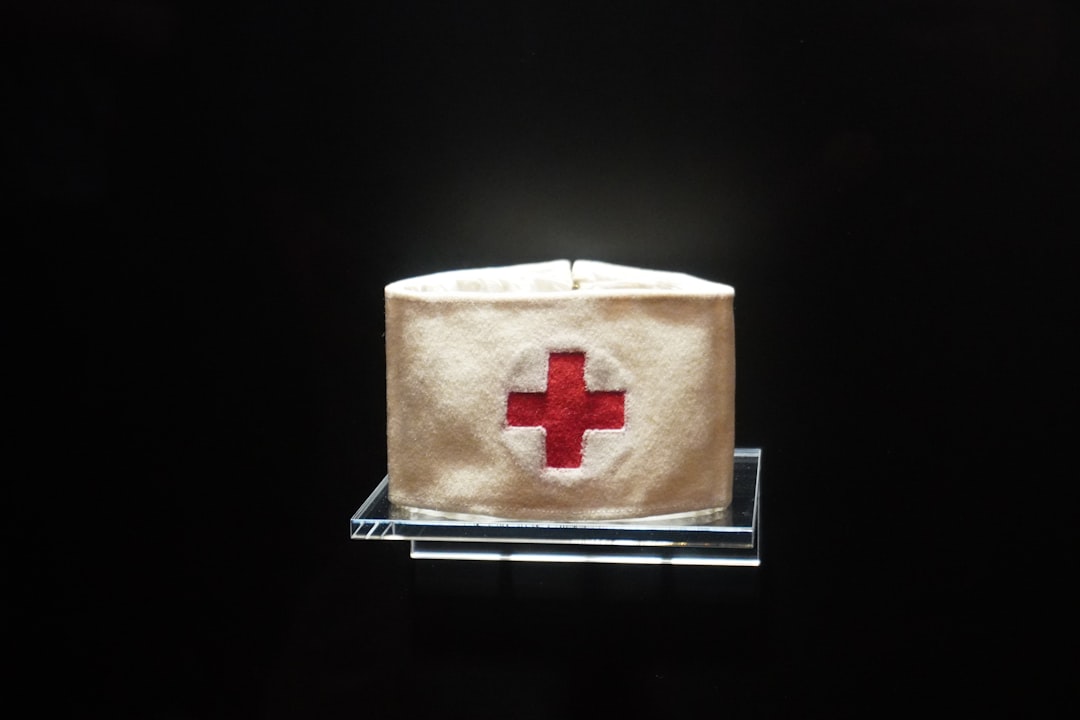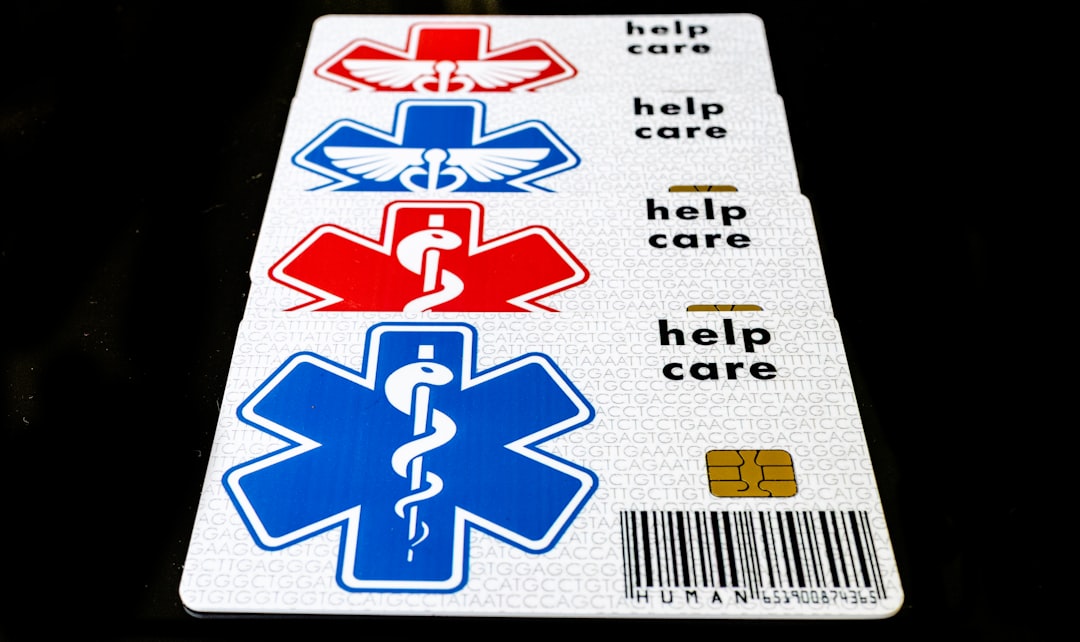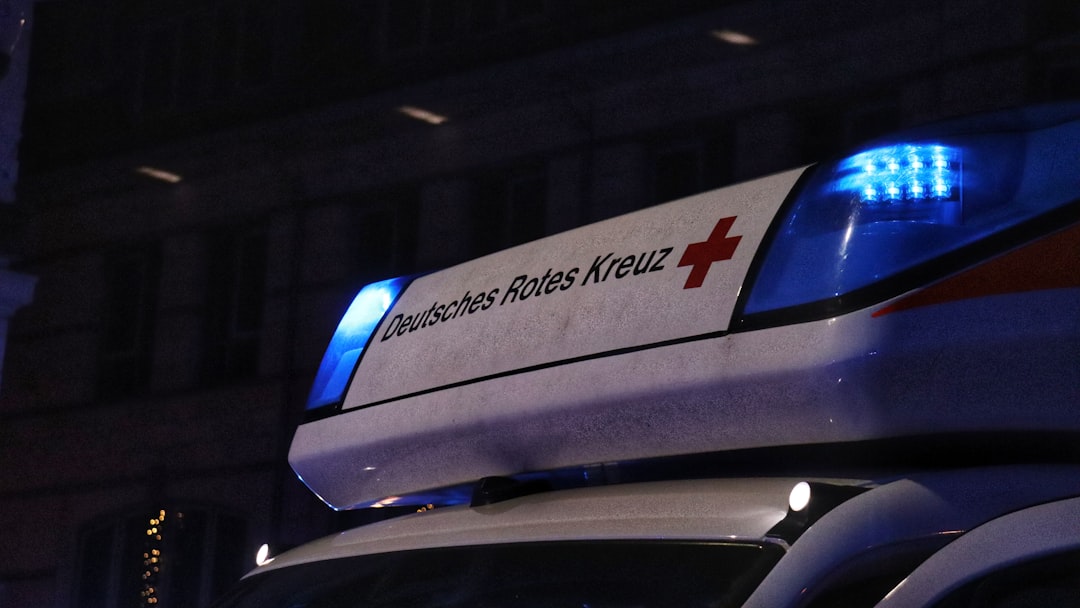

Engage prospects with a scan and streamline customer engagement with FREE QR code marketing tools by Sona – no strings attached!
Create a Free QR CodeFree consultation

No commitment

Engage prospects with a scan and streamline customer engagement with FREE QR code marketing tools by Sona – no strings attached!
Create a Free QR CodeFree consultation

No commitment
Medical service organizations face increasing pressure to provide exceptional patient experiences while improving operational efficiencies. Unfortunately, valuable feedback from key patient segments is often missed because traditional feedback methods fail to reach those who avoid paper forms or manual engagement. As healthcare rapidly adopts digital marketing and patient engagement, QR codes are emerging as powerful tools to connect offline interactions with actionable online feedback. See recent trends in medical marketing.
Paper forms and manual surveys are not only slow and inefficient but also discourage participation and limit the quality of insights. When patients simply discard a paper survey or forget a web link, crucial feedback for service improvement or upsell is lost. QR codes provide a streamlined path to digital surveys and reviews with no app downloads or logins needed. Whether implemented for post-appointment surveys, telehealth follow-ups, or pharmaceutical touchpoints, QR codes help capture patient sentiment in the moment and provide comprehensive insight into the patient journey. For review collection, see Google reviews.
Integrating QR codes into feedback workflows increases response rates, improves efficiency, and delivers granular data for better targeting and real-time satisfaction measurement. By making every patient touchpoint trackable within CRM and analytics systems, as described in Sona QR’s product overview, organizations close data gaps and identify valuable patient segments that might otherwise go unnoticed. The following sections outline how strategic QR code adoption can revolutionize feedback collection and patient engagement for healthcare organizations.

Medical service organizations frequently struggle to gather feedback that is both timely and truly representative, missing high-value signals from patients who are unwilling or unable to fill out traditional forms. QR codes bridge the gap between physical touchpoints and digital feedback, making it simple for patients and staff to share insights that inform continuous improvement while helping organizations uncover previously untracked opportunities.
The key to success is designing QR-driven feedback journeys that meet patients where they are. Replace analog processes with digital experiences that feel effortless. When a scan is all it takes to reach a short mobile survey, patients are far more likely to share their experience while details are still fresh. This improves data quality and speeds time to insight for operational leaders.
Here’s how to do it effectively:
Example: Instead of distributing paper surveys post-visit, clinics deploy QR stickers at check-out and in waiting rooms that trigger short mobile surveys. Collection rates improve, and feedback is tied directly to context such as location and visit time, making data more actionable and helping detect areas at risk for disengagement. Try stickers and labels to boost visibility in high-traffic areas.
Modern platforms automate QR code creation, link scans to branded digital surveys, and connect scan data to CRM systems for seamless analysis. This approach empowers teams to identify engagement gaps early and adapt feedback strategies accordingly while eliminating manual data entry and reducing administrative burden on staff.

Medical service organizations face persistent challenges in tracking patient satisfaction, reducing operational blind spots, and creating seamless offline-to-online experiences. Too often, lack of visibility into who is engaging with care materials or services results in missed opportunities for follow-up, upsell, or proactive support. QR codes provide a low-friction entry point to digital experiences that patients actually use, leading to higher participation and better insights. For broader context on QR-driven patient engagement, explore this healthcare overview.
By adding QR codes to common healthcare materials such as appointment cards, discharge instructions, billboards, and brochures, organizations transform static assets into measurable touchpoints. Each scan can capture context about time, location, and channel, which makes it easier to understand what prompted the action and how to respond. See how this applies to billboards.
For example, clinics that place unique QR codes on discharge packets and treatment room posters can capture feedback in context and offer support options immediately. This proactive approach uncovers issues before they escalate and highlights opportunities for patient education, follow-up scheduling, or care coordination.

With fragmented systems and growing expectations for personalized care, medical service organizations need flexible tools that meet patients where they already engage. QR codes come in several formats that support different goals across the patient journey, from quick feedback to follow-up care requests.
In healthcare settings, formats that launch surveys and forms are most valuable because they capture structured feedback with minimal patient effort. vCards and app download links also play supporting roles, especially for specialty clinics and telemedicine programs that rely on ongoing digital engagement.
Dynamic QR codes are particularly useful in healthcare because destinations often need to change as services, campaigns, or patient journeys evolve. Centralized management suites such as Sona QR let teams update links, apply tags for attribution, and visualize performance in one place.

Growth leaders in healthcare often confront inconsistent feedback collection, limited visibility into patient needs, and missed opportunities for retention or upsell. The solution is to place QR codes where patients and families already spend time, then connect scans to simple digital experiences that feel natural and trustworthy.
Look for high-intent moments when patients are attentive and open to sharing feedback or asking for help. Context matters. Codes that appear at the right moment, with a clear benefit-driven call to action, outperform generic placements that feel unrelated to the patient’s immediate needs.
Each touchpoint is a chance to gather timely, context-rich feedback and nurture lasting relationships. When QR codes are thoughtfully placed and clearly labeled, patients understand the value of scanning and are more willing to participate.

Medical organizations often lose momentum when engagement data fails to capture the full patient journey. This leads to missed cross-sell, upsell, or service recovery opportunities. QR codes can be embedded along the care continuum to close data gaps and keep the conversation going long after a visit ends.
Prioritize use cases that ask for a single, specific action and deliver a clear benefit to the patient. Avoid sending scanners to generic homepages. Instead, drive to short mobile forms, simple NPS or CSAT questions, or request-for-help flows that set expectations about response time.
Additional scenarios include radiology or lab visits that prompt feedback after results are delivered, physical therapy programs that use QR codes to confirm home exercise compliance, and pharmacy partners that add codes to receipts to capture medication counseling satisfaction.
A persistent challenge in healthcare marketing is the inability to identify and retarget anonymous engagement. Each QR scan provides a signal about intent, context, and journey stage. With smart tagging and thoughtful destinations, you can segment audiences for tailored follow-up without guesswork.
Think in terms of lifecycle stages and the actions that indicate movement from awareness to engagement to loyalty. Use a different QR code for each stage, then sync scan activity to your CRM or marketing automation platform so subsequent outreach reflects what the person actually did.
When scan data syncs seamlessly into existing systems, organizations can bring formerly invisible interactions into view. This supports ongoing engagement, targeted education, and timely interventions that reduce churn and increase satisfaction.
Disconnected campaigns and siloed channels create inconsistent messaging and patient confusion. QR codes act as connectors that make printed and physical touchpoints measurable while routing patients to the right digital destination at the right time.
To get the most from QR codes, align them with your broader marketing and patient experience strategy. Ensure every code has a single purpose, a clear call to action, and a landing experience that matches the promise on the physical asset.
With centralized QR code management, teams can monitor performance across channels, attribute engagement accurately, and adjust messaging so every touchpoint reinforces the care journey. Platforms like Sona QR simplify governance at scale and ensure brand consistency.
Launching a QR-driven feedback program starts with clear goals and ends with continuous optimization. Treat your first deployment as a learning sprint. Keep formats simple and track everything so you can double down on what works.
Below are the essential steps, along with practical tips tailored to medical service organizations. Use them to standardize execution across departments and locations while leaving room for local optimization.
Start by defining the single outcome you want from the campaign. For example, improve post-visit CSAT collection by 30 percent within 60 days or reduce the time to escalate urgent patient concerns by half. Map the outcome to a specific patient moment, such as discharge, telemedicine summary, or prescription pick-up.
Once the goal is clear, decide what the patient will see and do after scanning. Keep the ask small and the path obvious. If your objective is NPS or CSAT, use a two-stage survey that collects a rating first, then reveals a short free-response field. If the objective is service recovery, route to a form that flags urgency and offers a callback option.
Choose between static and dynamic QR codes based on your need for flexibility and measurement. Static codes point to a fixed destination. They work for evergreen content with minimal tracking needs. Dynamic codes point to a managed URL that can be updated or tagged without reprinting.
For feedback campaigns that require attribution and improvement over time, dynamic codes are the safer choice. They let you A/B test destinations, rotate languages, and apply UTMs without issuing new materials. Learn about creating dynamic QR codes with Sona QR.
Design your QR placement to match the physical environment. Larger formats, high contrast, and generous quiet zones around the code improve scannability. A clear call to action and a value-driven headline will improve scan intent. Use consistent branding across locations to build familiarity.
Testing is non-negotiable. Validate scans on iOS and Android devices, from seated and standing positions, and in both bright and low-light settings. Confirm that the landing page loads quickly and renders the form above the fold.
Roll out placements where patients already engage. In most clinics, start with reception, exam rooms, and discharge packets. Add QR codes to telemedicine summaries and post-visit text messages to capture digital experiences as well. Use unique codes per location so you can compare performance.
Coordinate deployment timing with staff training. Front-line teams should understand what the QR code does, how to encourage scanning, and what happens after a negative response. Consistent verbal prompts such as You can share quick feedback by scanning this code increase participation.
Monitor scan and completion metrics from day one. Compare performance by placement, time of day, and department. Tag negative responses for fast follow-up and note where operational changes improve sentiment.
Optimization is continuous. Test shorter surveys, alternate CTAs, and improved placement. If a code underperforms, try a larger format, different height, or moving it closer to exit points. Share wins across locations to accelerate learning.
Healthcare organizations struggle with incomplete or outdated account data, which complicates service improvement and makes program impact hard to prove. Tracking QR code interactions provides a reliable pipeline of real-world engagement signals that teams can act on in near real time.
The analytics journey starts at the scan and continues through survey completion and follow-up actions. Integrate this data with EHR, CRM, and marketing tools so feedback is not siloed and aligns with Sona’s multi-touch attribution.
Key strategies include:
Solutions such as Sona QR support granular, privacy-compliant enrichment and provide dashboards that unify scans, completions, and follow-up outcomes. This turns anonymous signals into operational insight while safeguarding sensitive information and honoring patient consent.
QR code programs succeed when they are easy to scan, simple to understand, and clearly connected to a patient benefit. Sustained success also depends on internal enablement and the ability to iterate based on data rather than assumptions.
Before scaling, standardize a few best practices that reduce friction across the board. Make scan prompts part of staff routines, simplify the survey experience, and ensure that negative responses trigger a reliable escalation path.
Example: Senior care centers use QR badges at visitor check-in to capture family feedback in real time, while ambulatory clinics print QR codes on medication packaging to prompt aftercare surveys. Both tactics close common gaps in the post-care experience and surface issues before they become complaints. See more ideas in this guide to senior care marketing.
Real-world deployments show that small changes in placement and messaging can produce significant gains. The most successful teams keep surveys short, promise value, and close the loop with fast follow-ups when issues arise.
Here are a few examples to spark ideas across different care settings and patient journeys. Use them as starting points, then tailor messaging and destinations to your population.
These examples align with a broader trend in healthcare toward measuring the micro-moments that define patient experience. When paired with responsive operations, feedback becomes a driver of loyalty and reputation.
Successful QR initiatives focus on clarity, simplicity, and accountability. The pitfalls to avoid are just as important as the tactics to adopt. In many cases, poor scan rates and low completion volumes trace back to preventable issues such as low contrast, confusing CTAs, or asking for too much information.
Plan for the patient’s real environment. Consider lighting, distance, and the time they have available. Put the benefit first. A concise message such as Share your visit feedback in 30 seconds outperforms vague prompts like Learn more.
By following these best practices, medical service organizations maximize patient engagement and data quality while avoiding the pitfalls of disconnected campaigns, wasted spend, and incomplete account data.
QR codes deliver far more than convenient survey access. They represent a strategic approach to engaging patients, streamlining workflows, and unlocking actionable data within medical service organizations. By converting every physical and digital touchpoint into an opportunity for meaningful feedback, organizations accelerate satisfaction, measure engagement more precisely, and drive continuous improvement across every stage of care.
From waiting room signage to telemedicine follow-ups, QR-enabled feedback loops unify fragmented data and empower data-driven decision-making. The right platform ensures compliance, integrates with existing healthcare technologies, and provides marketing professionals with the visibility needed to connect feedback to outcomes. This prevents wasted effort and ensures audiences are segmented by real engagement rather than generic assumptions.
Now is the time to pilot a focused QR feedback initiative, measure results, and scale what works. Start with one or two high-traffic touchpoints, keep the survey short, and track performance in a centralized dashboard. As you expand, use dynamic codes, standardize CTAs, and automate follow-ups to turn every scan into a step toward better care and stronger relationships. If you want an all-in-one way to manage codes, monitor performance, and sync scan data to your CRM, platforms like Sona QR make it simple to get started and grow. Start creating QR codes for free.
QR codes have revolutionized medical service organizations by transforming patient feedback collection into a seamless, data-driven process. Beyond simply gathering insights, they empower healthcare providers to enhance patient experiences, improve service quality, and foster stronger patient relationships through immediate, mobile-friendly access to surveys and feedback channels. Imagine instantly capturing authentic patient opinions at every touchpoint and using that real-time data to make informed improvements that elevate care delivery.
With Sona QR, medical service organizations can create dynamic, trackable QR codes in moments—updating feedback campaigns on the fly without costly reprints and linking each scan to actionable insights that drive operational excellence. No missed responses, no delayed analysis—just smarter feedback loops that directly impact patient satisfaction and organizational success. Start for free with Sona QR today and transform every scan into a powerful opportunity to listen, learn, and lead in patient-centered care.
Medical service organizations can enhance patient experience by using QR codes to link physical touchpoints to digital surveys and feedback forms, enabling patients to share timely and effortless feedback without app downloads or logins.
Implementing QR codes in healthcare marketing increases feedback response rates, improves operational efficiency, enables real-time satisfaction measurement, bridges offline-to-online engagement gaps, and provides measurable analytics for targeted follow-up.
QR codes improve operational efficiency by replacing slow paper surveys with instant digital feedback, reducing manual data entry, enabling tracking within CRM systems, and offering actionable insights that support rapid service recovery and resource allocation.
Senior care marketing can integrate QR codes creatively by using QR badges at visitor check-ins to capture family feedback in real time and printing QR codes on medication packaging to prompt aftercare surveys, thereby closing common post-care experience gaps.
QR codes help drive new patient leads by providing a simple scan that directs potential patients to appointment booking, informational resources, or review platforms, increasing engagement among tech-averse or time-pressed individuals without requiring app downloads.
Use Sona QR's trackable codes to improve customer acquisition and engagement today.
Create Your FREE Trackable QR Code in SecondsJoin results-focused teams combining Sona Platform automation with advanced Google Ads strategies to scale lead generation

Connect your existing CRM

Free Account Enrichment

No setup fees
No commitment required

Free consultation

Get a custom Google Ads roadmap for your business






Launch campaigns that generate qualified leads in 30 days or less.
